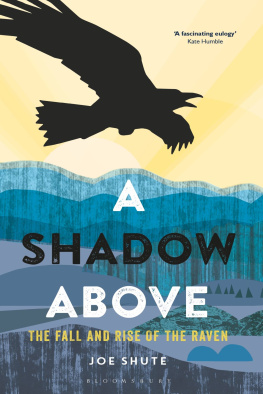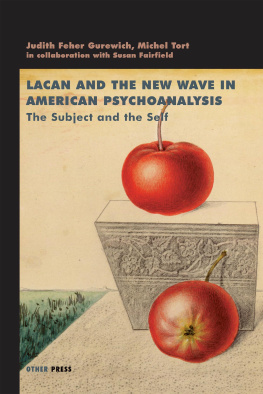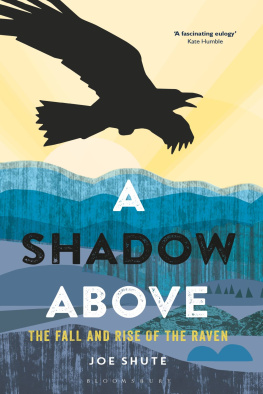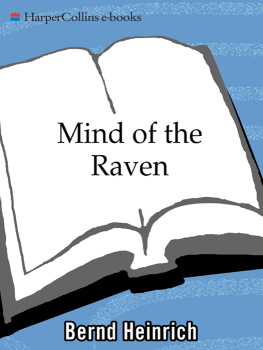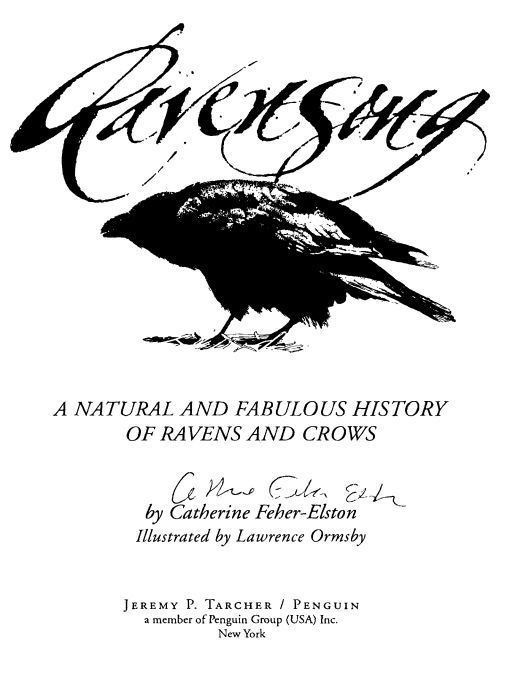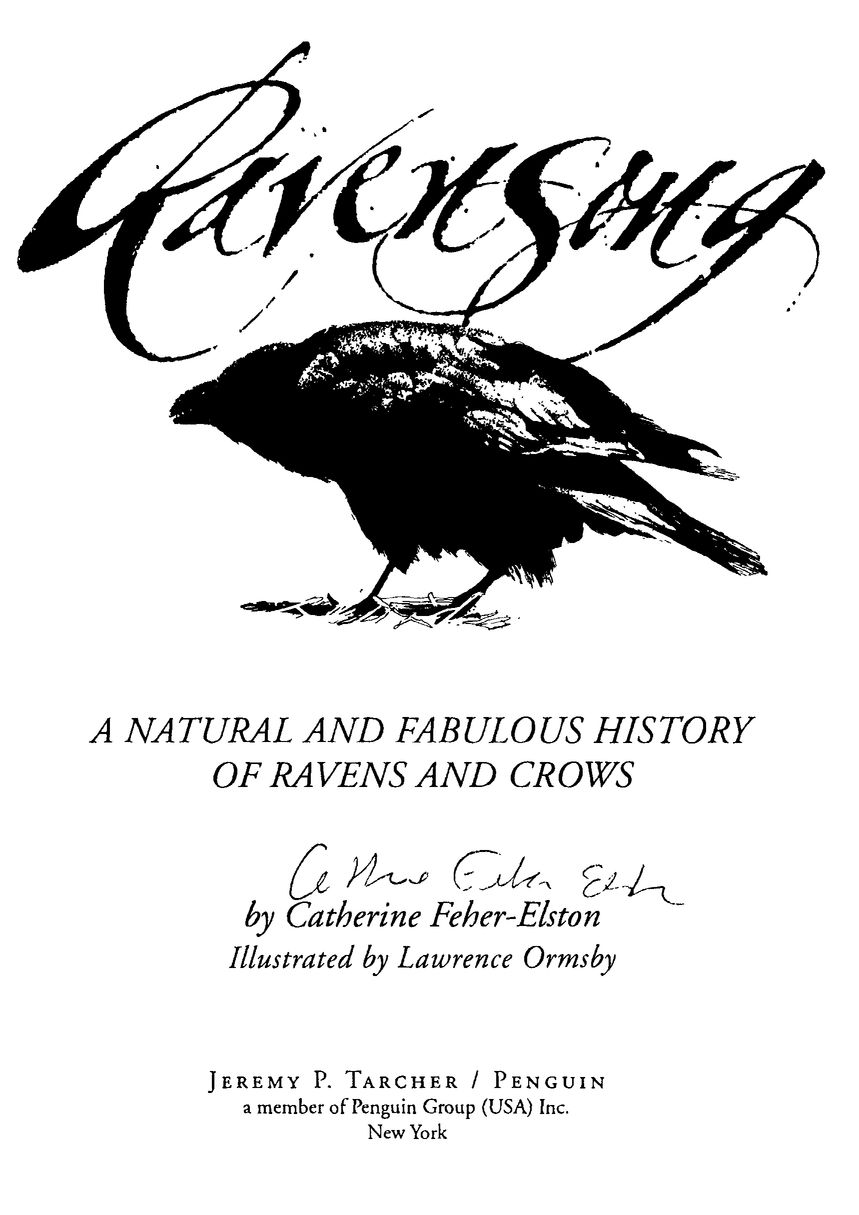Table of Contents
ALSO BY CATHERINE FEHER-ELSTON
Wolfsong: A Natural and Fabulous History of Wolves
For Gagee, Wimi, Crowsey, and the Bird People
Make prayers to the Raven.
Raven that is,
Raven that was,
Raven that always will be.
Make prayers to the Raven.
Raven, bring us luck.
FROM THE KOYUKON
This is the story about crows:
One is for sorrow.
Two is for mirth.
Three is a wedding.
Four is a birth.
FROM AN OLD AMERICAN RHYME
Acknowledgments
The past year has been a kind of corvid pilgrimage. I have gone from myth times to the world of today, from the world of magic to the world of science, in the name of Raven. As part of my research, I met with people from the Raven Clan (a leadership clan) of the Kwakiutl and Haida peoples, I discussed shamanic healing with Raven priests, I reviewed the writings of tribal historians describing the lives of great leaders guided by ravens and crows, and I met with scientists who love and understand ravens and crows not for their magical powers but for the beautiful and intelligent birds they are.
In any project of this sort, there are certain people whose assistance proves invaluable. I was fortunate in my research and travels, because admirers and students of these birds freely shared their thoughts, expertise, and in many cases, their homes with me.
During my travels on Vancouver Island, I met many remarkable people. Among the tribes of the Great Northwest, stories and dances are clan and personal property. To share a story with a person, to give a person a story, is to give that person a special gift; it also shows them honor. In potlatch societies, there is nothing nobler or more prestigious than giving, and I appreciate the gifts that these people gave me. George Taylor, a Kwakiutl Raven-dancer, explained to me that Raven is everything. He is spiritual strength, he is power, he is the past, and he is the future. He is the essence of my people.
In a Catholic cathedral in Victoria, there is a beautifully carved collection of Salishan boxes, each depicting in traditional art forms Christian New Testament stories. In older days, these large cedar boxes held food for the living and served as caskets for the dead. These particular boxes serve as the churchs main altar. On the most beautiful box, there is a painted carving called Raven-Woman: Mary Pregnant with the Word. It shows a Salishan woman, wrapped in the wings of White Raven, travelling to Vancouver Island in a cedar canoe beneath a shining sun, accompanied by dolphin messengers. The Salishan creator of this beautiful box is Charles Elliott.
Struck by the mastery of the piece, in which I saw Raven the Transformer, I located Elliott and requested an interview. He invited me to his home on the Salish reserve. We met, and I was treated to an afternoon with the artist and his family. He said that what I perceived was correct, what he had carved was Raven transforming; what the Church chose to see was her own interpretation. Elliott gave me a great gift that day, two Raven stories. One was a serious story about Raven and people after the Great Flood, the second was about Raven and his sisters, the Crows, picking berries (the latter is included in this book).
Two others from this island must be thanked. The first is anthropologist Kevin Neary of the Royal British Columbia Provincial Museum, who kindly guided me through various exhibits and put me in contact with Raven George Taylor and Charles Elliott. The second is mathematician Owen Brandon, who became a friend and has supported my work through his own research and an assortment of newsclippings, articles, and rare books about ravenlore and Canadian Indian affairs.
I also want to thank Russell Barsh, an attorney and lecturer at the University of Washington Law School, for his interviews and assistance. Barsh and I were introduced through contacts at the United Nations, where he does important human rights work through that organization and his legal advocacy.
I would not have learned the details of the prophecies of Circling Raven had it not been for the interest of Spokane attorney Robert Dellwo. Mr. Dellwo is one of the most outstanding Indian law attorneys in North America; I didnt know this when I attended high school at Holy Names Academy with his daughter Madeline. I learned about Mr. Dellwos remarkable contributions to the corpus of Indian law during research at Spokanes Museum of Native American Cultures.
I want to thank the staff of that museum, not only for bringing me to Spokane in 1989 to lecture about Indian affairs and the Navajo and Hopi land dispute, but for their support of my raven research in the autumn of 1990 as well. Special thanks are due museum staffer Jan Wigen, who initially invited me to Spokane. Museum archivist and photo collection curator Kaye Hale deserves a special note of thanks, because she encouraged my interest in Crow and the Ghost Dance, and through her encouragement, new worlds of research were opened. Museum director Lynette Miller, an expert in Pacific Coastal art, deserves thanks for her support as well.
I also want to thank Raymond Reyes of the Gonzaga University Indian Studies project. Raymonds enthusiasm and appreciation of the Raven people was contagious and he helped me tremendously. Through him, I met Bobby Lake, the shaman Medicine Grizzly Bear. Lake freely shared his knowledge (with the encouragement of the Bird People), and I cannot thank him enough for his unselfish gift of time.
Special thanks go to Dr. Curtis Hinsley, former chairman of the History Department at Northern Arizona University; his support of my research and academic endeavors and his encouragement of my teaching were greatly appreciated. Thanks are also due Dr. Loline Hathaway and the staff of the Navajo Nation Zoological and Botanical Park for their continued interest in my work.
It is said by some people that the world of science and the world of nature and philosophy must forever remain separated. Those who maintain this have never met Dr. Lawrence Kilham. All people interested in birds owe a great debt to Dr. Kilham and his wife Jane. I read interviews with Dr. Kilham in a national magazine and knew I had to read his book, The American Crow and Common Raven. Physician, historian, naturalist, and educator, Dr. Kilham is one of the greatest men Ive ever met. His willingness to correspond with me, his kindness in meeting with me, and the graciousness he and his family showed me in New Hampshire were most appreciated. Though I am not a naturalist, and have only started to explore the intricacies of raven and crow behavior, the Kilhams allowed me into their home and family circle and shared their time with me. I will always remember my climb up Holts Ledge with Dr. Kilhams daughter Phoebe. Seeing the ravens at the summit made the exertion well worthwhile.
I also want to thank my brother Mike Feher for his hospitality during my weeks of research in Seattle and my father Ferenc X. Feher for his support of my work and his time during my research in Spokane.


